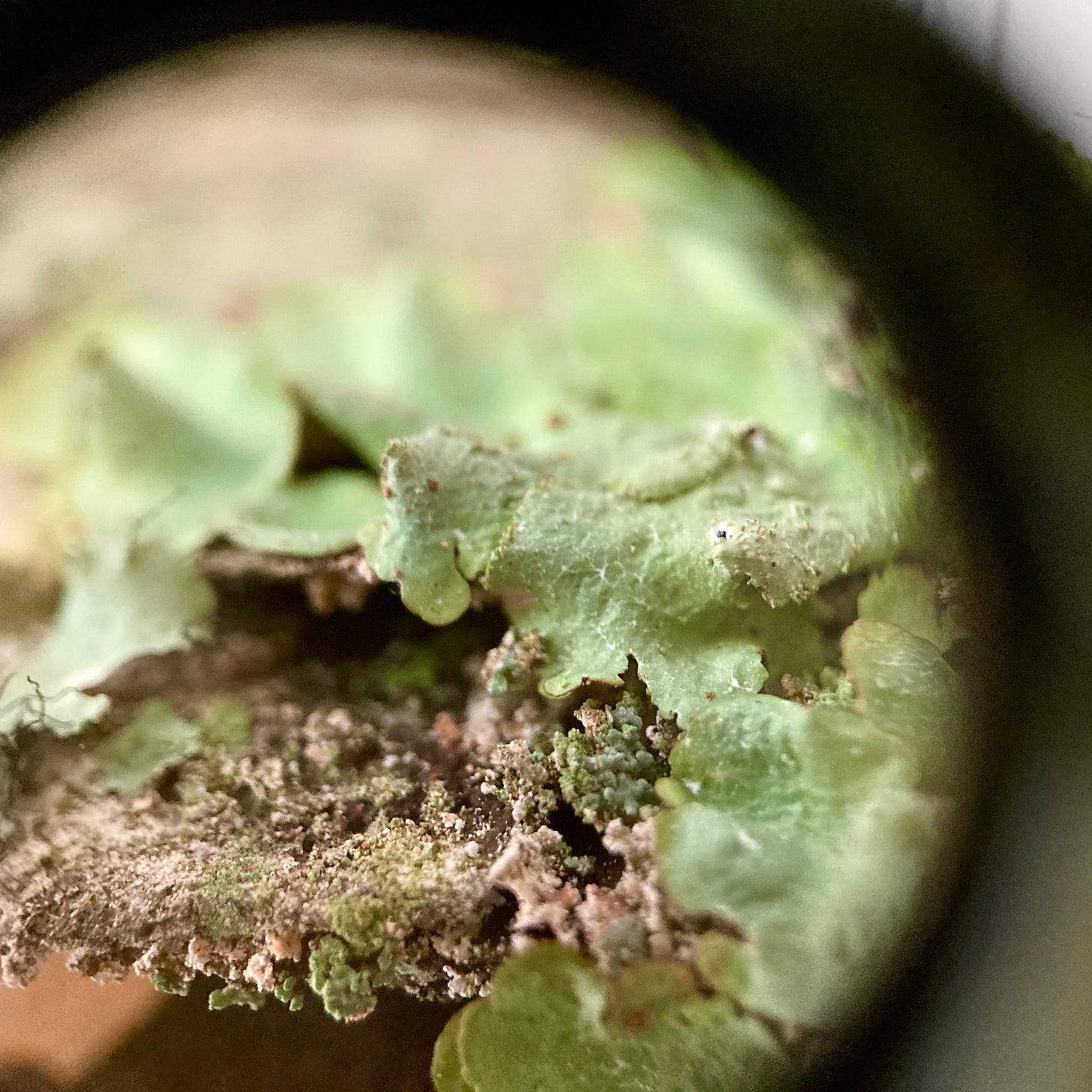We’ve reached the mid-point of the microseasons calendar and, in the northern hemisphere, this is the apogee of summer’s heat.
Some folks in North Carolina have named this microseason Hell’s Front Porch. Maybe they’ve never gone out into the coolness of an August morning to watch the forest wake up.
Here, let me show you my favorite tree— a very old Sycamore, who laid down beside the creek, but who didn’t die. Instead, this resilient beauty became a new creation: she is now part of the creek bank, and also a very good friend to the many children who love to come and play on her generous form.
Here’s my question: Is it possible to feel homesick for a place you currently inhabit?
What is the name of this sweet sadness? I’ve felt it many times as I practice observing the microseasons. It’s always a distinct feeling of nostalgia for something that I know is passing away— a feeling so ordinary and so holy all at once.
I think it’s the realization that every living thing in the world is constantly changing and making way for something new— and one begins to understand that dying and birth are equally beautiful.
…in Japan this beauty is often described by the term mono-no-aware—the poignant loveliness of the fragile universe. The Japanese imagination eulogizes that which is destined to fade and cherishes what is impermanent. It is in the very nature of fleetingness that we can feel the full impact of this delicate presence.
—Mark Hovane, The 72 Japanese micro-seasons
I recognize the hottest days as an invitation to slow down. My dog and I have adopted a gentler pace with breaks for drinking plenty of water. Our usual 90-minute walk takes about 2 hours now.
But there are still treasures to be found even on the hottest days. Here is a Cranefly orchid. Rather tall for a wildflower, but surprisingly easy to overlook and difficult to photograph unless the light falls just right.
Hot afternoons are good for staying cool at home and working on art projects or nature study. At the urging of Robin Wall Kimmerer, I got a 10x loupe that makes for fascinating up-close glimpses of the specimens I find in our yard.
This is what lichen looks like at 10x magnification.
Finally, I’ll leave you with a small moment of natural beauty from the original Bambi, written in 1929 by Felix Salten. If you haven’t read this old classic, I think you might love it. Here is a poetic glimpse into the mind of a newborn fawn.
The little fawn understood not one of the many songs and calls, not a word of the conversations. He did not even listen to them. Nor did he heed any of the odors which blew through the woods. He only heard the soft licking against his coat that washed him and warmed him and kissed him. And he smelled nothing but his mother’s body near him. She smelled good to him and, snuggling closer to her, he hunted eagerly around and found the nourishment for his life.
Go easy, my friends.
See you in the next microseason,
—Ann







Love your phrasing Ann;
'. . .a very good friend to the many children who love to come and play on her generous form.'
and the picture conveyed that reposing tree!
I'm going to have to get/make a microseason calendar!
We have a lawn mower mown path in the back through our property. Some years the remaining field is left grown, and would be perfect for microseason walks. It is soul filling to walk. I don't walk it often enough.
Beautiful post and pictures, Ann! I feel so peaceful when reading your microseason updates!